
 |
Eager Space | Videos by Alpha | Videos by Date | All Video Text | Support | Community | About |
|---|

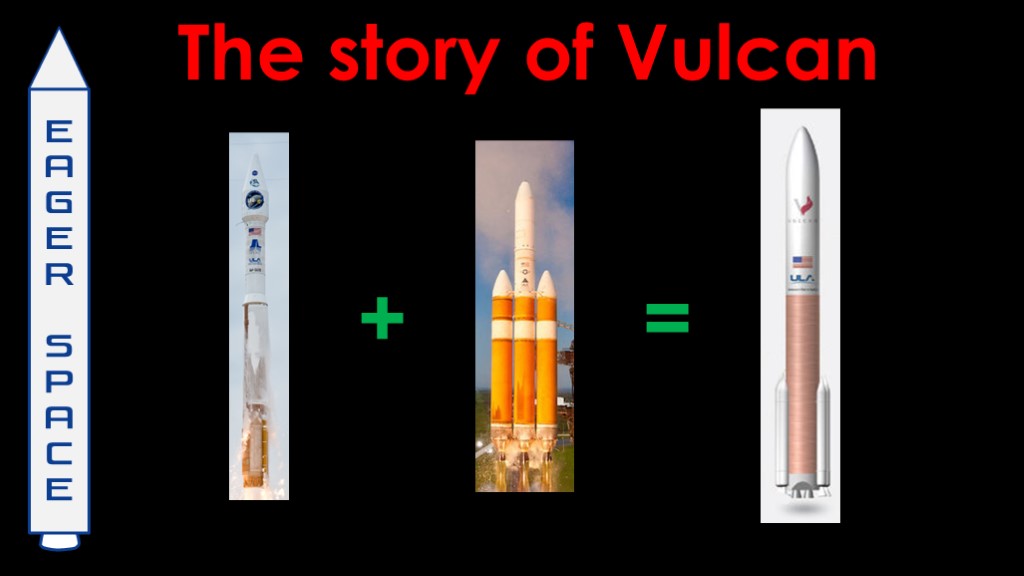
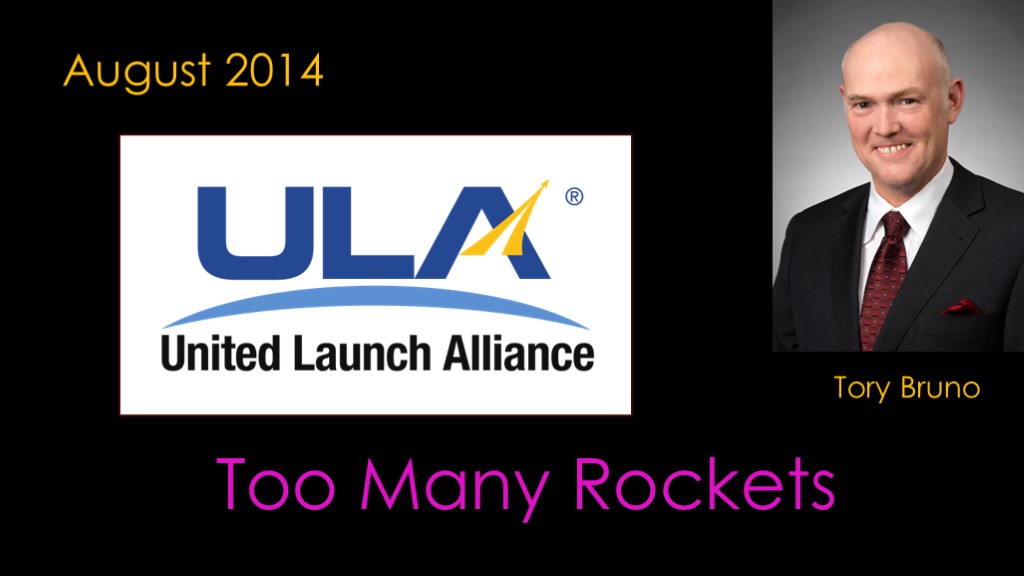
The year was 2014, and Tory Bruno had a problem. More specifically, the company he worked for - United Launch Alliance - had a problem, but since Tory Bruno had just taken over as CEO of United Launch Alliance, it was his problem.
He had too many rockets...
To understand why that was a problem, we'll need to back up a few years...
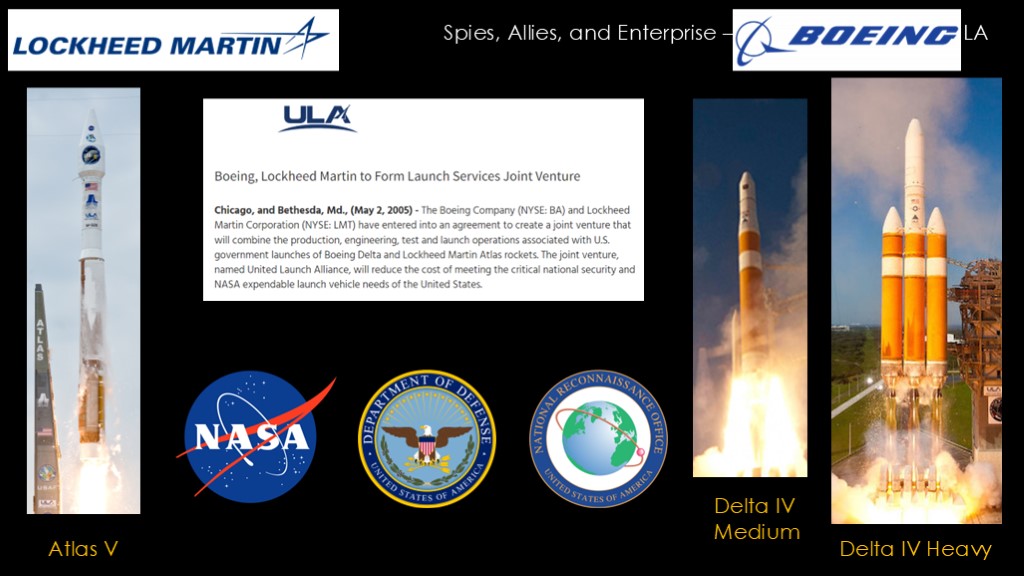
ULA was created in late 2006 as a forced marriage between Lockheed Martin and Boeing
If you want *that* story, see "Spies, Allies, and Enterprise - the Strange Story of ULA"
Each of the companies brought their rocket to the new company.
Lockheed Martin brought the Atlas V and Boeing brought the Delta IV Medium and Delta IV Heavy, both originally developed at McDonnell Douglas before their merger with Boeing.
And business was good - as the only significant US launch provider, they launched pretty much all the government payloads, be they NASA payloads or department of defense payloads.
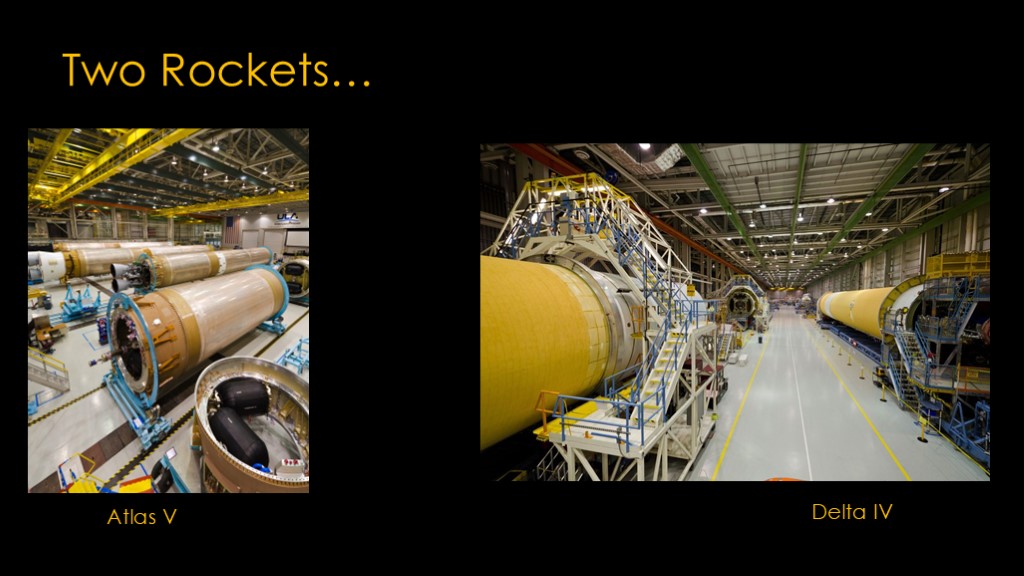
Duplication was a problem - they had one assembly line for the Atlas V rockets and one for Delta IV rockets and of course workforces for each rocket.
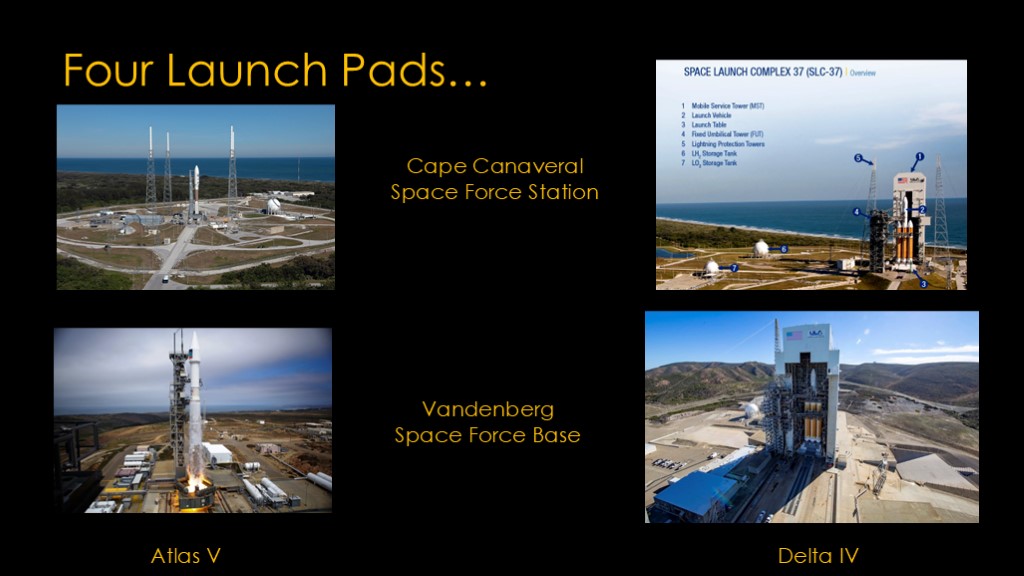
These two rockets needed four launch pads - an atlas V and delta IV pad at cape Canaveral space force station in Florida, and an atlas v and delta iv pad at Vandenberg space force base in California.
The duplication was expensive.
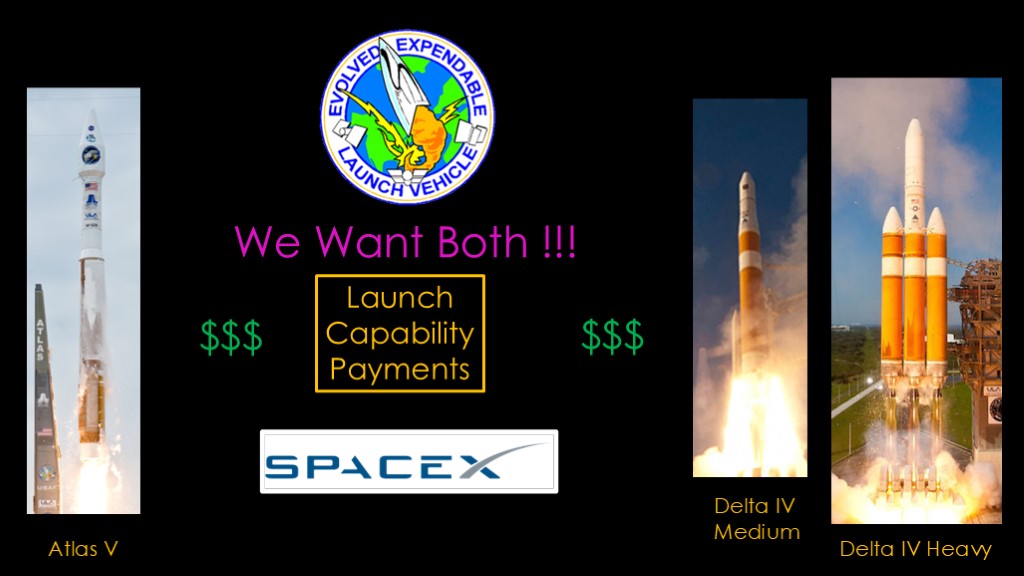
Both of these rocket designs came out of the Air Forces Evolved Expendable Launch Vehicle program, which is now known as national security space launch. The goal of that program was to come up with a new launcher that could launch both government payloads and commercial payloads and therefore would be cheaper for the government.
Lockheed Martin bid Atlas V, McDonnell Douglas bid Delta IV
After the project was out to bid, it was decided that the Air Force would choose two winners, which sounds like a good thing for the companies but was actually a bad thing.
If you are designing your rocket to launch say 10 times a year, your economics are much worse if you only launch 5 times a year. Both companies involved called "foul" and stated they wouldn't make money if there were multiple providers.
The Air Force decided to deal with this by throwing money at the problem, and the "launch capability payments" system was born. The government would pay the companies a retainer to keep the capability to launch if there weren't enough launches to make it profitable for the company.
These payments continued after ULA was formed and ended up being approximately $1 Billion per year.
Business was, as I said, good.
But this upstart named SpaceX came on the scene and had the audacity to sue the air force over a big launch award that was given to ULA without a competitive bid process and the air force had to settle because they would very clearly lose in court. It was clear that the days of the ULA monopoly were numbered.
ULA had two rockets, which was one rocket too many. The obvious solution was to choose one.
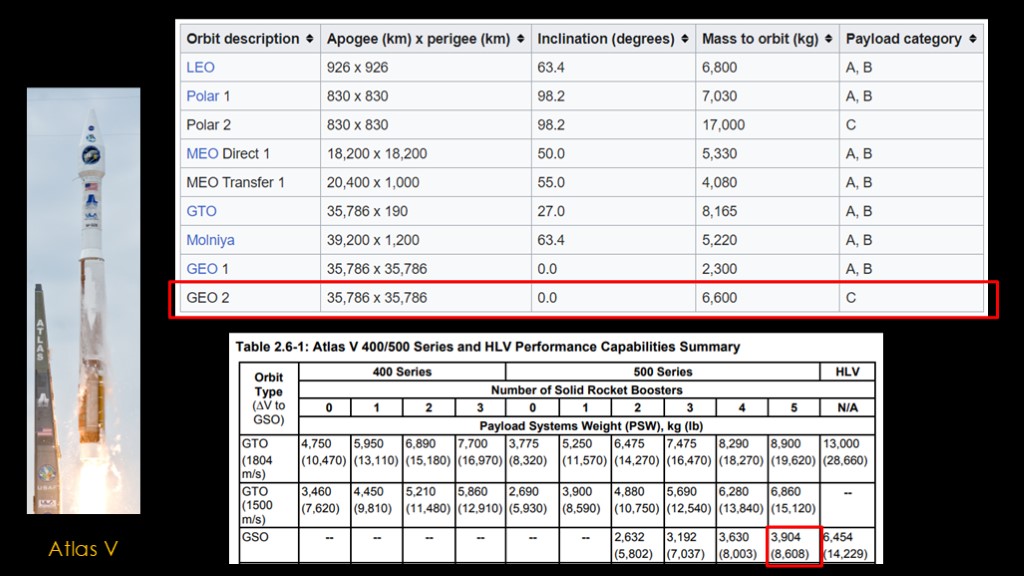
The Atlas V seemed like an obvious choice - it was cheaper and flying a lot more often than the Delta IV.
There were two problems, however.
The first was that for ULA to continue to get EELV/NSSL contracts, they needed to be able to reach 9 different orbits. The GEO 2 orbit at the bottom is an extremely challenging one - with a requirement of lifting 6,600 kilograms all the way to geostationary orbit.
A quick look in the Atlas User's Guide shows that there is a problem - the beefiest Atlas V can only carry 3,904 kilograms to that orbit and therefore it cannot meet all 9 orbits.
Atlas V cannot be ULA's only rocket.
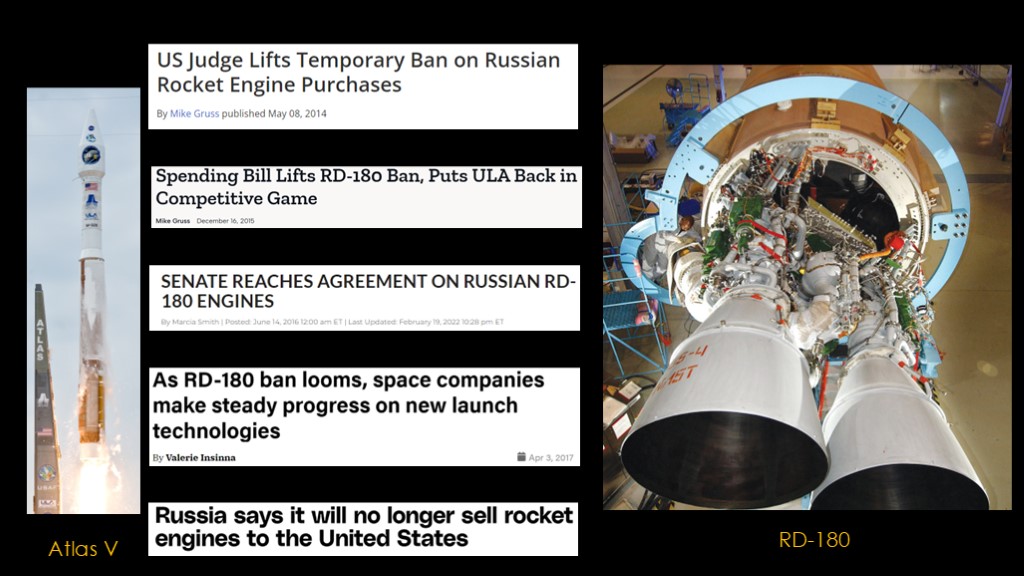
The Atlas V also relies on the RD-180 engine, which is highly efficient and relatively cheap but unfortunately is made in Russia.
That made use of that engine a political issue, and it went from being banned to being allowed back to being banned and the finally, having Russia say they would no longer supply any engines.
And therefore the RD-180 was not a long-term solution.
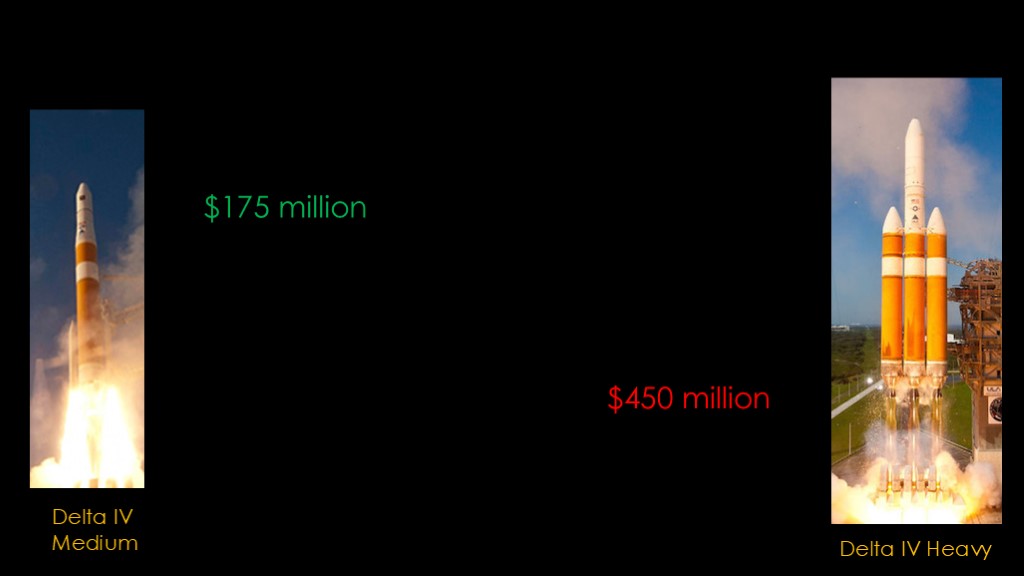
If not the Atlas, then use the Delta IV. It could do what the Atlas could do and the Delta IV Heavy variant with three boosters could meet that difficult geostationary orbit requirement.
The problem with delta iv was not performance but price.
Atlas V launches are in the $125-150 million range. Delta IV medium prices are hard to come by because it rarely flies, but it's likely in the $175 million range.
Delta IV Heavy launches were an eye-popping $450 million. This price raised a lot of eyebrows when ULA was the only game in town and with SpaceX touting Falcon Heavy at $90 million, it was going to make it very hard to justify.
Delta IV could do what was needed but it just cost too much.
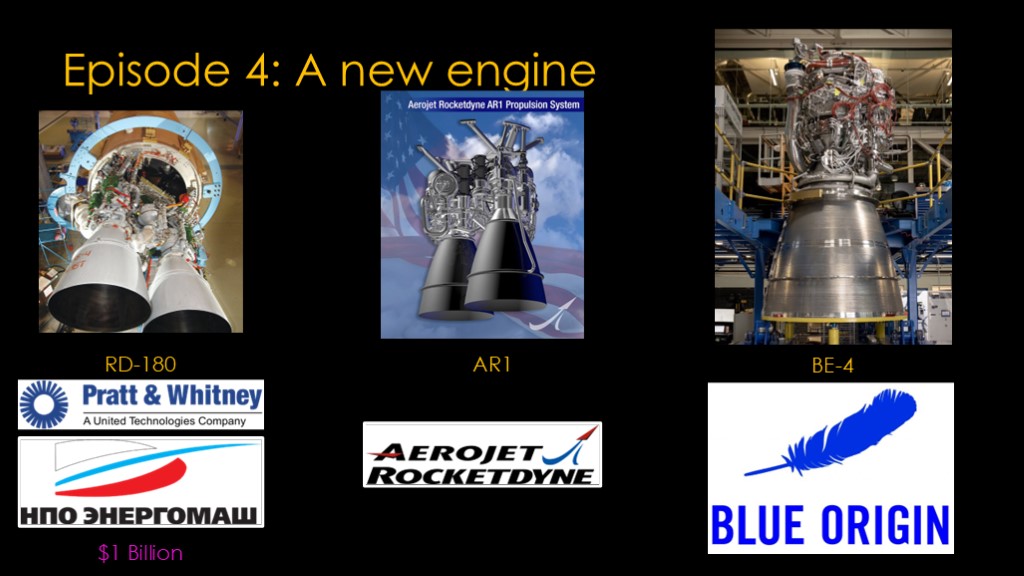
ULA needed a new rocket and that means ULA needed a new engine, and it would need to come from somebody else because ULA doesn't make engines.
The first option was surprisingly the RD-180.
Pratt & Whitney had formed a joint venture with NPO Energomash in Russia, the manufacturers of the RD-180, and out of that agreement had obtained a license to manufacture the RD-180 in the US. That seems like a great idea, but the number being passed around by Pratt & Whitney was $1 billion.
The second option was from Aerojet Rocketdyne, creatively named the AR1. It's a similar design to the RD-180 but only has about 60% the thrust. Aerojet Rocketdyne had gotten Congress to pass a law requiring the air force to develop an RD-180 replacement. The "billion" number was mentioned for this engine as well, though the bulk of that would be funded by the air force and aerojet rocketdyne.
The third choice was the BE-4 engine from the upstart Blue Origin. It was in the right thrust class for an Atlas V replacement and the development would be paid for by Blue Origin. It was also farther along in development than the AR1 and likely would be cheaper as well. It would require ULA to work with a new propellant as the fuel for the BE-4 is liquid methane rather than the RP-1 used by the RD-180 and AR1. ULA decided on the BE-4 for their new rocket.
It is often remarked that ULA took a big risk going with Blue Origin who had never developed a large rocket engine, and they have certainly had to deal with many BE-4 delays. But it's important to remember that the last high performance engine that Aerojet rocketdyne developed with the RS-25 for the space shuttle all the way back in the 1970s and the AR1 was only a concept. Tory Bruno has repeatedly said that, despite the delays, they made the right choice going with the BE-4.
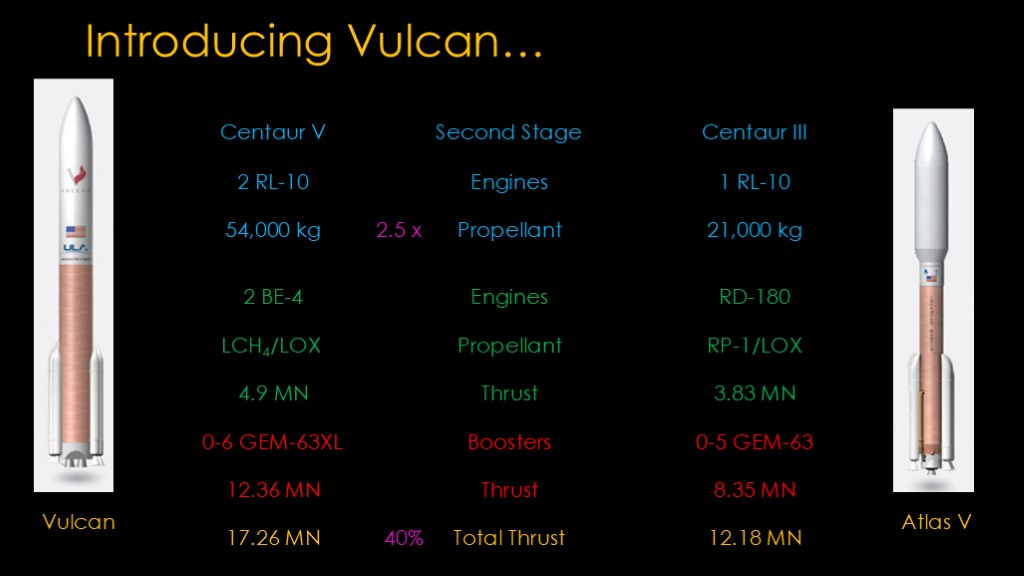
Once ULA had an engine to design around, they could design a rocket to use it, and they came up with Vulcan. Vulcan is the god of fire in Roman mythology and that's certainly a great choice for a rocket and better than his Greek counterpart, Hephaestus.
Conceptually, Vulcan is like a big version of Atlas V.
The first stage has gone from 3.8 meters in diameter to 5.4 meters. The Atlas V used an RD-180 engine burning RP-1 refined kerosene with liquid oxygen and produced 3.83 meganewtons of thrust. Vulcan has two BE-4 engines burning liquid methane and liquid oxygen and producing 4.9 meganewtons of thrust.
Like the Atlas V, Vulcan's performance is tunable by adding solid rocket boosters to the first stage. Atlas V can use up to 5 GEM-63 boosters to add 8.35 meganewtons of thrust.
Vulcan can use up to 6 GEM-63XL boosters to add up to 12.36 meganewtons of thrust. Add the solids to the main engines, and Vulcan's 17.26 meganewtons is 40% greater than Atlas V's 12.18 meganewtons.
All of this extra thrust is in service of a much larger second stage. The Centaur III used on the Atlas V has a single RL-10 engine and only 21,000 kilograms of propellant. It's a very efficient stage but not a very powerful one.
The new Centaur V used on Vulcan has double the thrust with 2 RL-10 engines and 2.5x the propellant, so it is a much more capable stage.
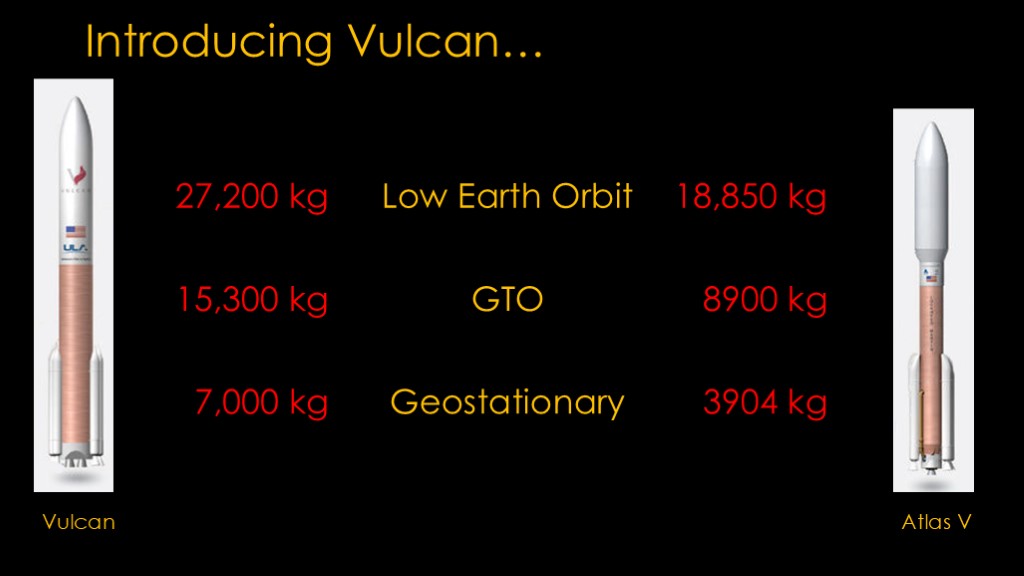
Vulcan can fly much heavier payloads than Atlas V, with 27,200 kilograms to low earth orbit, 15,300 kilograms to geosynchronous transfer orbit, and 7000 kilograms to that pesky geo 2 orbit required by NSSL.
Vulcan will meet all the needs of ULA and will allow them to fly a single rocket.
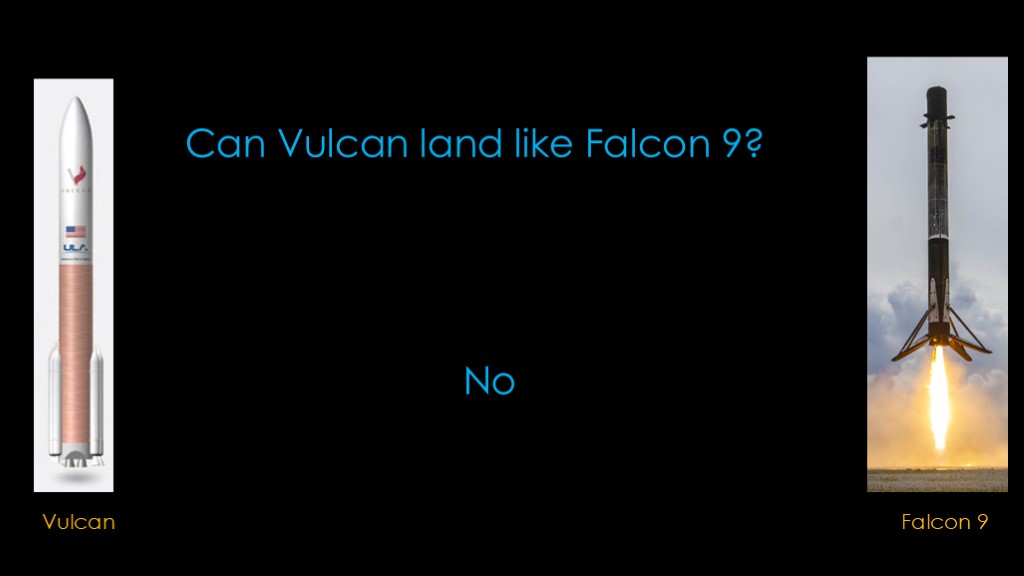
The world of rockets has changed since Vulcan was conceived, with Falcon 9 making first stage reuse routine, the obvious question for any new rocket is "Can it land like Falcon 9?". And the answer for Vulcan is "no"
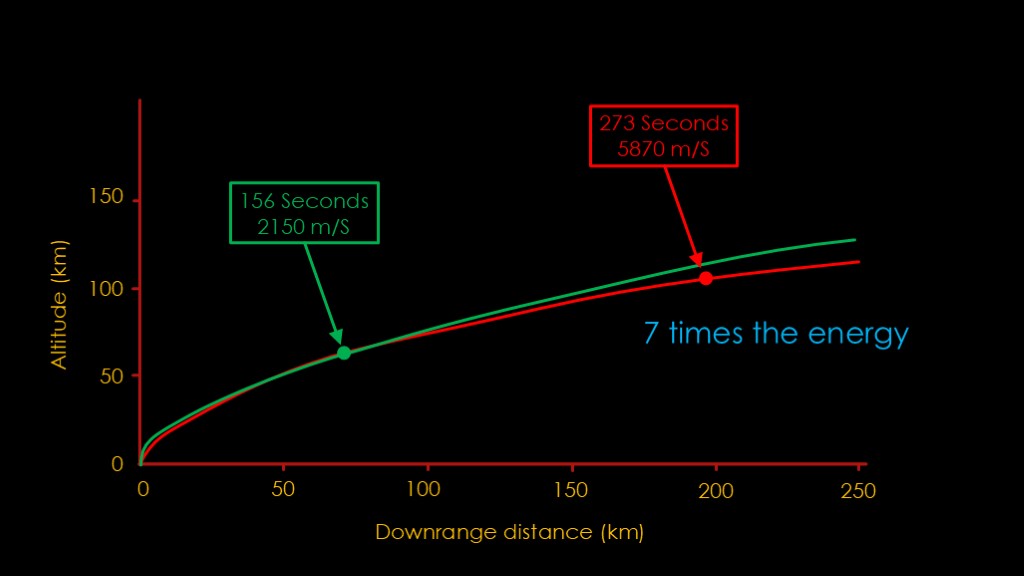
This is a chart showing a Falcon 9 launch, with the staging point indicated by the green circle.
At that point the first stage is travelling at 2150 meters per second. Falcon 9 has a big beefy second stage that can do a lot of work, so that allows it to stage early in flight.
We don't have all the numbers for Vulcan, but Atlas V uses the same philosophy
Atlas V has a less beefy second stage, and therefore stages later and at a higher velocity of 5870 meters per second.
Kinetic energy is proportional to the square of the velocity, and the Atlas V first stage has 7 times the energy that the Falcon 9 first stage has at staging. Dealing with that energy during reentry into the earth's atmosphere would require a thermal protection system, a significant entry burn, or both. Either of those would result in a big performance penalty.
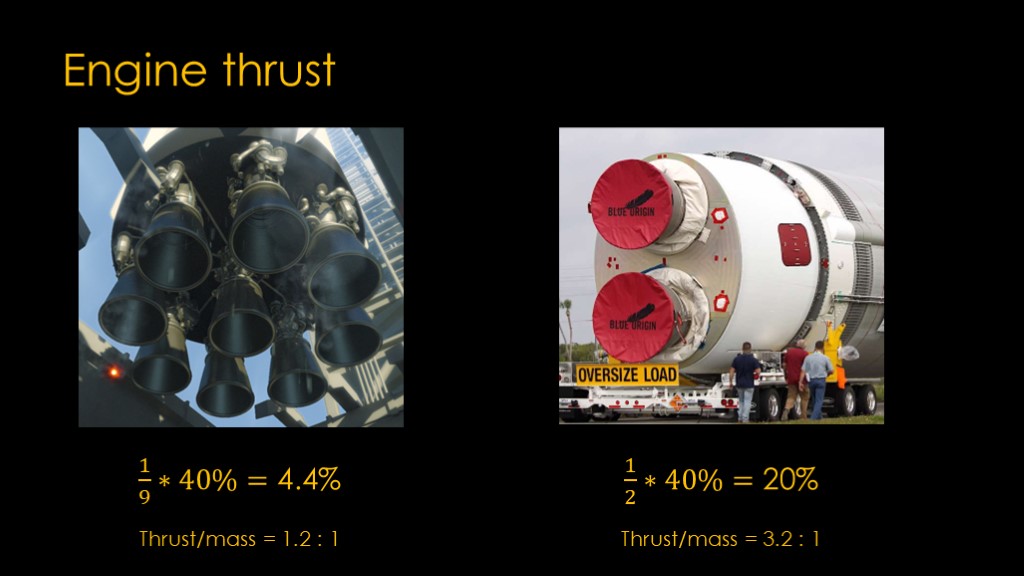
The low engine count of Vulcan is also an issue.
Falcon 9 can run a single engine at 40% and that lets it throttle down to 4.4% of full thrust when landing. That gives it a thrust to mass ratio of 1.2 to 1; a little bit too high to hover, which is why it does a "hoverslam" landing.
Vulcan has two engines, so the best it can do if the BE-4 can throttle down to 40% is 20% of full thrust, which gives a thrust to mass ratio of 3.2 to 1. Falcon 9 has done three engine landings at that thrust/mass ratio, so it is possible but much more difficult and Vulcan would also need to somehow deal with the off-axis thrust as it only has two engines.
This two issues together mean that Vulcan is not designed to be able to do propulsive landing.
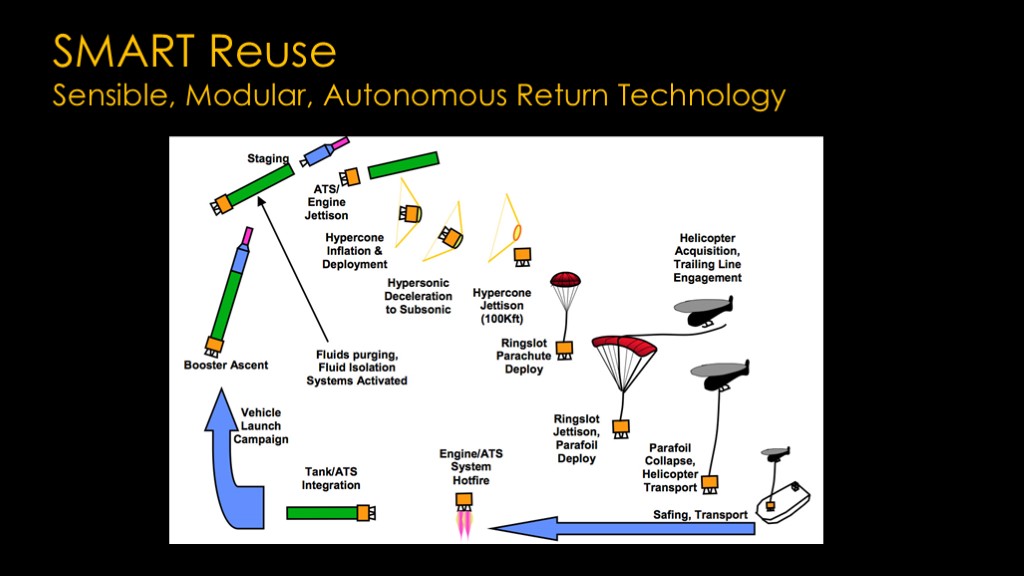
ULA is planning on implementing a different reuse technology.
Their plan is to put the BE-4 engines into an engine "pod", and jettison that pod after staging. The pod will have an inflatable heatshield to make it through the atmosphere, then it will deploy a parachute that will ultimately be caught by a helicopter. It will then be returned to their factory, refurbished, and flown again.
It's very much like a capsule approach.
There are three main technical challenges to this approach...
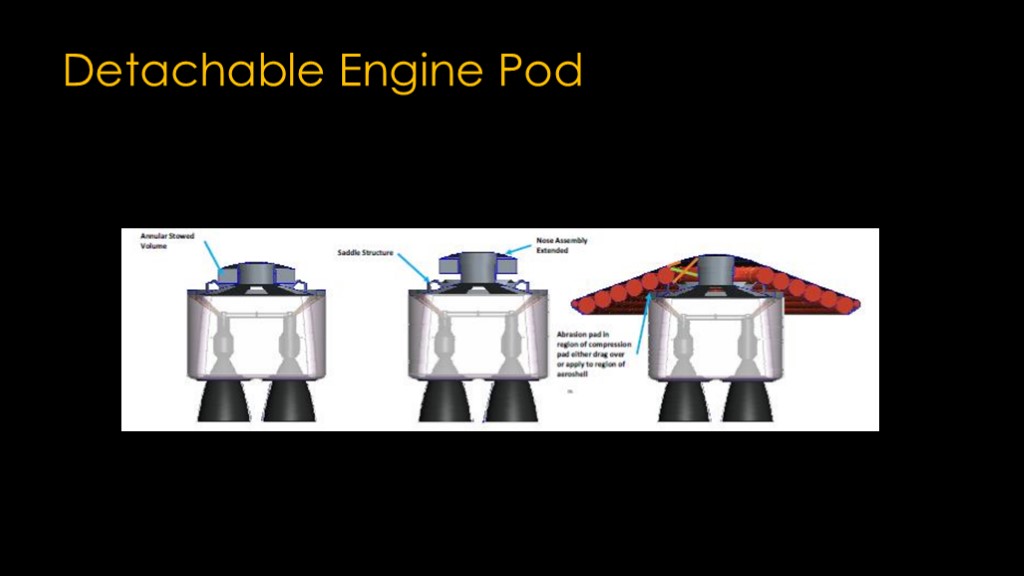
The first challenge is the building an engine pod that is easily attached to the rest of the first stage and easily detached when desired. That will require a fair bit of engineering but seems straightforward.
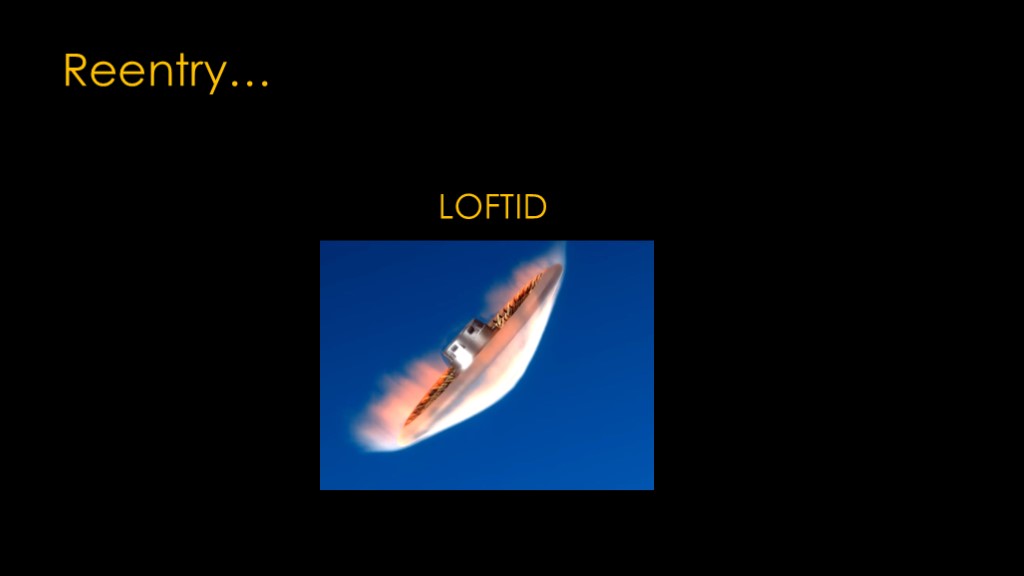
The second challenge is getting the engine pod through the atmosphere. NASA has flown a test mission using an inflatable heatshield to return from low earth orbit, so this also seems practical.
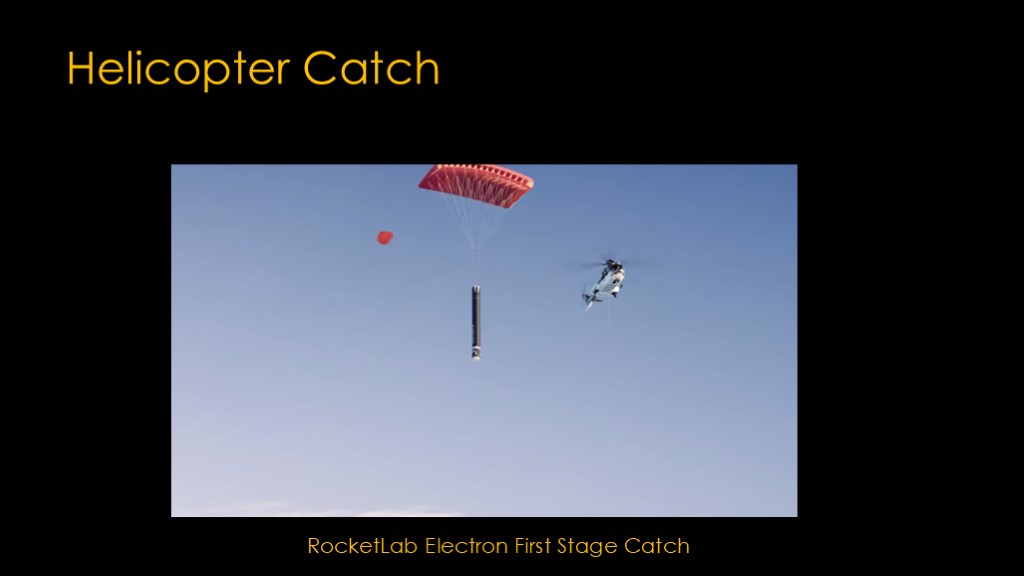
The third challenge is catching the parachute with a helicopter and bringing the pod down to a ship.
RocketLab tried doing this to enable reuse of the first stage of their Electron rocket. They were able to successfully attach but found that the resulting combination of helicopter and stage was not aerodynamically stable and they have since abandoned this approach.
The Vulcan engine pad will be smaller than the Electron first stage but likely 5 times the mass. This part of the architecture will be hard to do in the dark and presumably puts a human crew at risk during the catch operation. I think it is the riskiest part of their reuse approach.
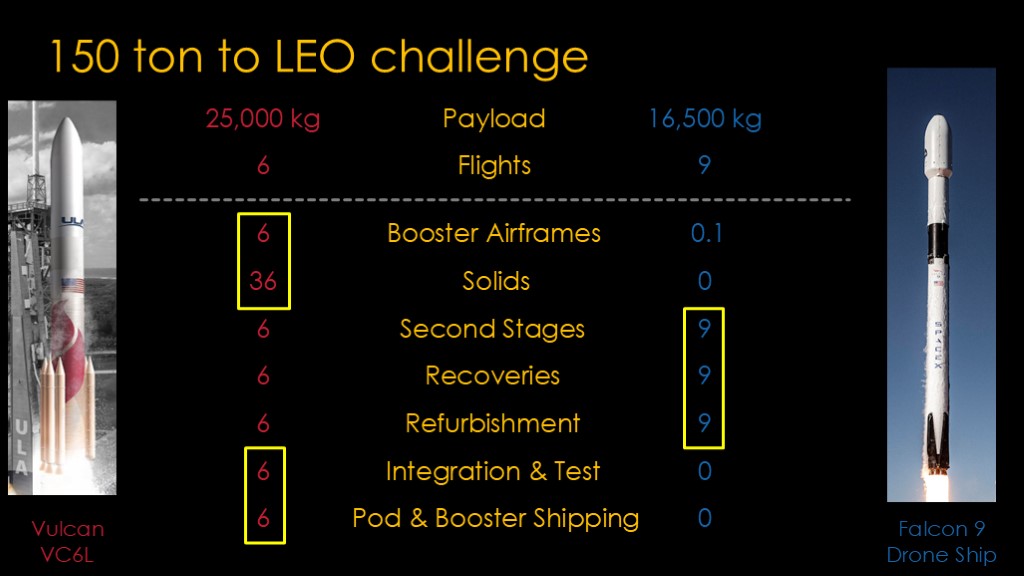
How does Vulcan reuse compare with Falcon 9?
Let's compare Vulcan with SMART reuse to Falcon 9 landing on a drone ship, and assume our goal is to get 150 tons into low earth orbit. ULA claims that Vulcan is optimized for high energy missions - like going to geosynchronous transfer orbit or direct to geostationary orbit, so this will probably show it at its worst...
The Vulcan with 6 boosters and SMART reuse will do around 25,000 kilograms to low earth orbit, and therefore will take 6 flights to lift 150 tons. Falcon 9 has a payload in drone ship mode of about 16,500 kilograms, so it takes 9 flights.
We can now look at what it takes for each rocket.
The Vulcan needs 6 booster airframes - everything but the engine pod. Falcon 9 needs 0.1 assuming you only fly each booster 10 times.
Vulcan needs 36 solid rocket motors.
Vulcan needs 6 second stages while Falcon 9 needs 9.
Vulcan needs 6 recoveries and refurbishments while falcon 9 needs 9
Vulcan needs to integrate the engine pods into the new airframes and test them, and it also needs to ship pods and boosters around.
Looking at the negatives for Vulcan, they need to be building the new booster airframes and putting used engine pods back into them while SpaceX doesn't need to do any of that work. They also need to be buying solid rocket motors for their flights.
SpaceX has 3 negatives. They need to build 3 more second stages, but each of those stages uses a single Merlin Vacuum engine that SpaceX makes while each Centaur V uses two RL-10 engines that they buy off the shelf. RL-10 engines are rumored to cost $10 million each, but ULA has ordered 116 of them from Aerojet Rocketdyne and that is going to reduce the cost a lot, though only ULA knows how much. SpaceX has built a ridiculous number of Falcon 9 second stages and their design is highly optimized.
At best, I'd expect the 6 Centaur V stages to be similar in cost to 9 Falcon 9 second stages but my actual guess is that the 6 Centaurs cost at least twice what the 9 Falcon 9 Second stages cost.
The second SpaceX negative is having to do 9 recoveries versus only 6 for Vulcan. SpaceX needs to get both the drone ship and the support vessels out out in the ocean, while ULA will only need a single ship with their helicopter, but it will be much farther from land. Assuming SMART recovery lives up to its name, I'm going to say that SMART is as cheap as the drone ship which means Vulcan will be cheaper on recovery.
SpaceX also has to refurbish more boosters but their process is simpler and they don't have to deal with shipping. They also have obviously done this a *lot*. I think SpaceX is going to be cheaper even with more boosters to work on.
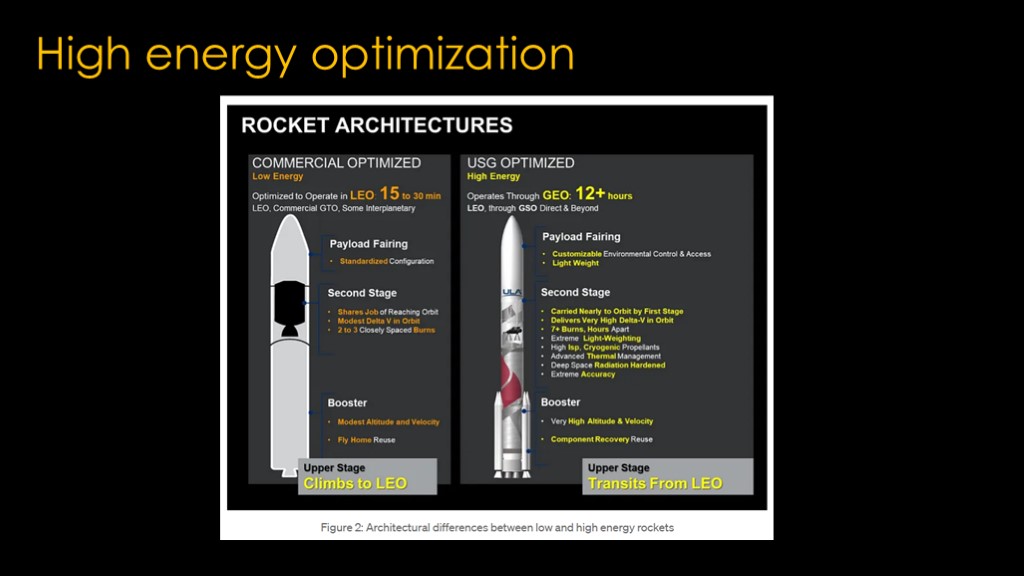
ULA has been talking a lot recently about how Vulcan is a high energy rocket, which means it is better at orbits that are harder to get to than LEO.
Is that true? We can look at a couple of different scenarios..
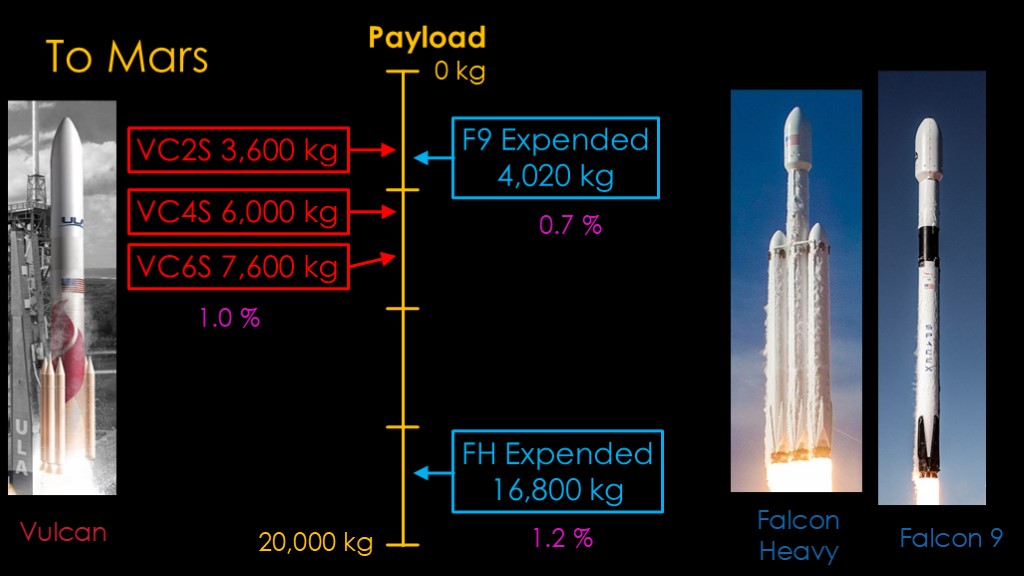
Mars gives us an opportunity to do a direct comparison as ULA and SpaceX both publish payload numbers...
Starting at the low end, the Vulcan VC2S configuration with 2 solids can send 3,600 kilograms to Mars.
Just a little bit higher is Falcon 9 expended, at 4,020 kilograms. We are just getting started and Falcon 9 has reached its limit. Falcon 9 is not a great high energy rocket, it can only get 0.7% of its takeoff weight to Mars.
Adding on solids, Vulcan gets 6,000 kilograms with 4 solids, and 7,600 kilograms with 6 solids. These are healthy amounts of payload, and good support for the assertion that they have a design that works well for high energy missions. With 6 solids, they get 1% of their takeoff weight to Mars, and that's about 40% better than Falcon 9.
Unfortunately for this argument, there's another SpaceX rocket, and it can toss 16,800 kg to Mars in fully expendable mode, with lower payload options for side boosters landed on drone ships or back at the launch sites. It can throw about 1.2% of its takeoff weight to Mars.
Vulcan is therefore a nice choice for high energy or planetary missions if they are on the light side but can't compete with Falcon Heavy for big payloads.
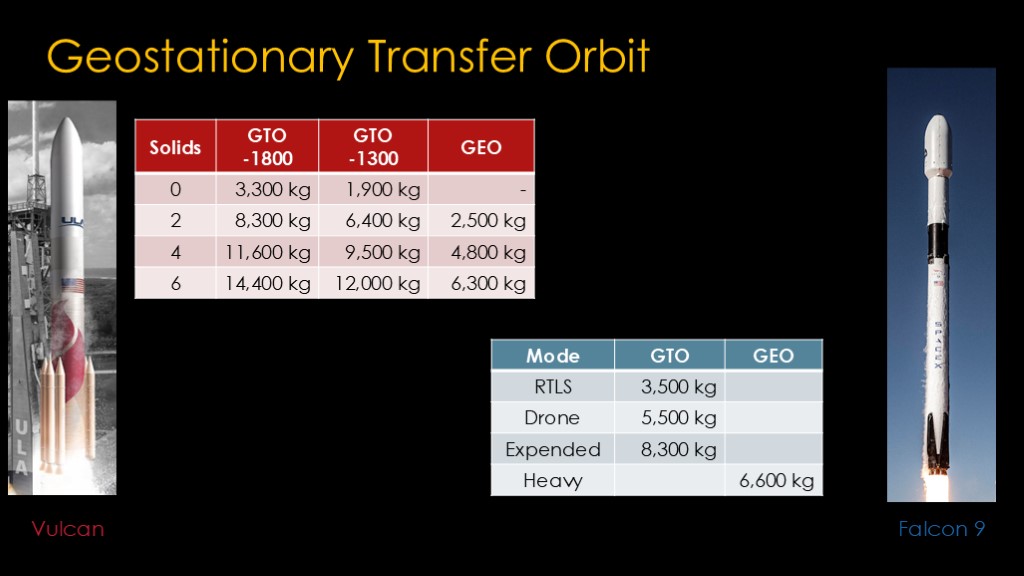
We can also look at geostationary transfer orbit performance.
ULA gives us some great information for Vulcan showing its performance to two separate GTO orbits and all the way to geostationary orbit. You can see that the closer you get to geostationary orbit, the less payload you can carry.
SpaceX doesn't publish information on this so the information we have is reverse engineered from what is launched, and here are the Wikipedia numbers. The problem we have is we don't know what the actual destination orbit is - is it the nominal GTO-1800 orbit, or was the customer willing to accept GTO-2000 or wanted GTO-1600?
There are complex tradeoffs at work.
The satellites do the work to get from the transfer orbit to their final orbit and on current generations that takes quite a bit of propellant and time - typically 6 months or more.
Let's just say we have a 5,500 kg satellite we want to launch. On the Vulcan side, we could fly 2, 4, or 6 solids which would get us anywhere from about GTO-1200 or all the way to geosynchronous orbit. More solids costs more but it gets us operational quicker and preserves fuel.
On the Falcon 9 side, we could fly drone ship recovery and be - probably - somewhere around GTO-1800, we could fly expended and be a lot closer, or we could fly Falcon Heavy and get all the way to GEO.
Each option on both rockets has a different price.
Sometimes customers want their satellites in the destination orbit as soon as possible. Sometimes they are launching spares that likely won't be needed for a couple of years.
Factor in how soon you can launch after your satellite is done - where you can fit into a provider's schedule - and that makes things even more complex. And customer requirements may change along the way - they were okay with the cheapest launch but they've had a failure and they're burning cash until they get a replacement up there.
Both Vulcan and Falcon 9 / Falcon Heavy are solid offerings in this market and it's hard to come to any definitive conclusion.
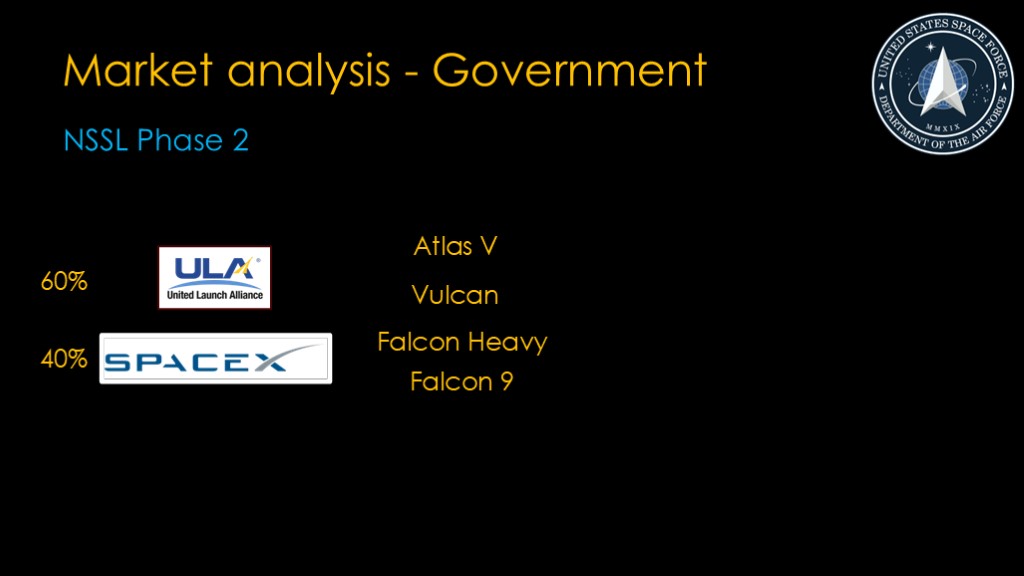
Time for some market analysis. The first big competition for ULA was NSSL Phase 2.
ULA was allocated 60% of the launches from NSSL Phase 2. They have 1 Atlas payload early in 2024, and then the remaining 25 flights will be Vulcan flights. They *do* need to get Vulcan flying as soon as possible as they need 2 successful flights before they can start launching NSSL payloads. Assuming they can do this, NSSL will remain a reliable source of high profit missions for them.
SpaceX got 40% of the launches, using either Falcon 9 or Falcon Heavy
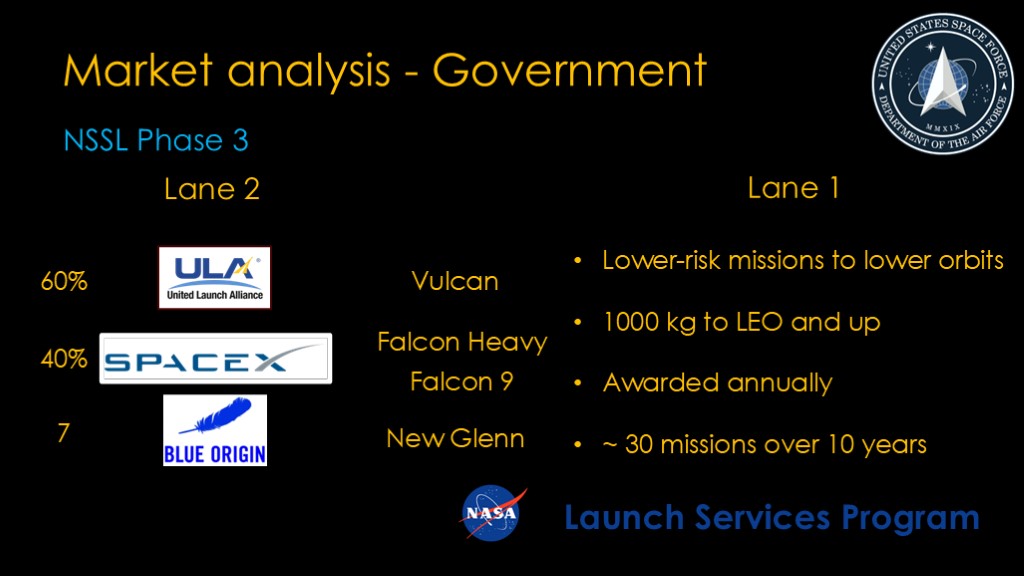
NSSL Phase 3 is for the next batch of launches, and the DoD has decided to change things around by introducing the concept of "lanes".
Lane 2 has the traditional NSSL rules and the traditional 60/40 split, with the 60% going to ULA though it is possible that SpaceX will get the 60%.
Blue Origin did some effective lobbying and the second draft of the phase 3 rules added room for a third provider who would get 7 launches, so the launch numbers are likely 26, 17, and 7, a reduction of 4 launches for ULA and 3 for SpaceX.
There is also this new thing called Lane 1. It provides a way for other providers to bid for lower risk missions and all you need to participate is to get certified and be able to carry at least 1000 kilograms to low earth orbit. This is a short-term program; they will do annual awards. If you are familiar with the NASA launch services program, it's like that.
Lane 1 may start stealing payloads from lane 2 as the shorter scheduling period and likely lower price will be attractive to many programs.
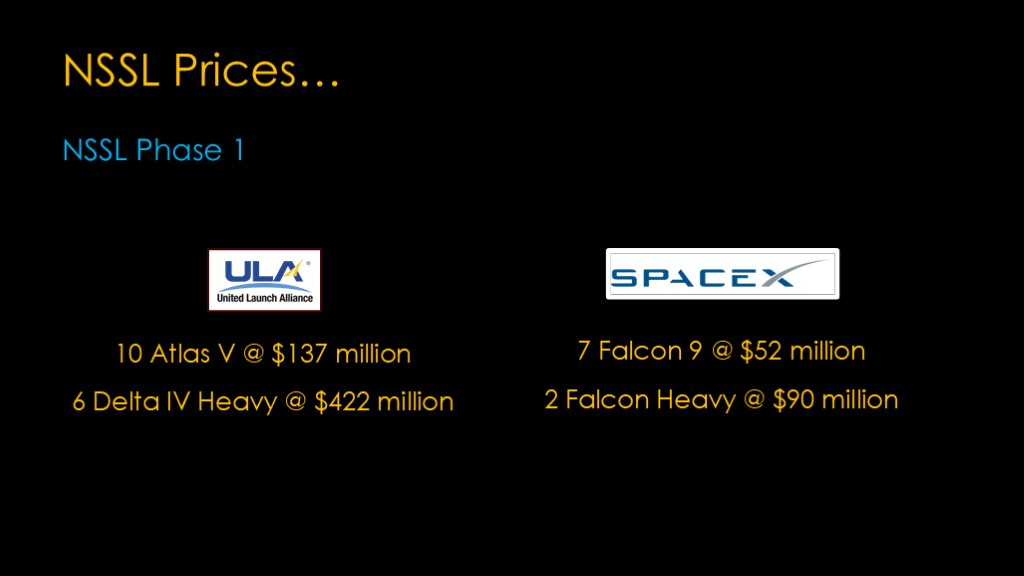
The prices charged for NSSL launches provides an interesting window into how competitive Vulcan will be.
In NSSL phase 1, ULA ended up launching 10 Atlas V rockets at an average of $137 million and 6 delta IV heavy at an average of $422 million.
SpaceX joined in after the lawsuit with 7 falcon 9 launches at $52 million each and 2 Falcon Heavy at $90 million each.
There's obviously a big discrepancy in the prices, but SpaceX very much wanted to get into the NSSL world and low prices made it easier for them to do it.
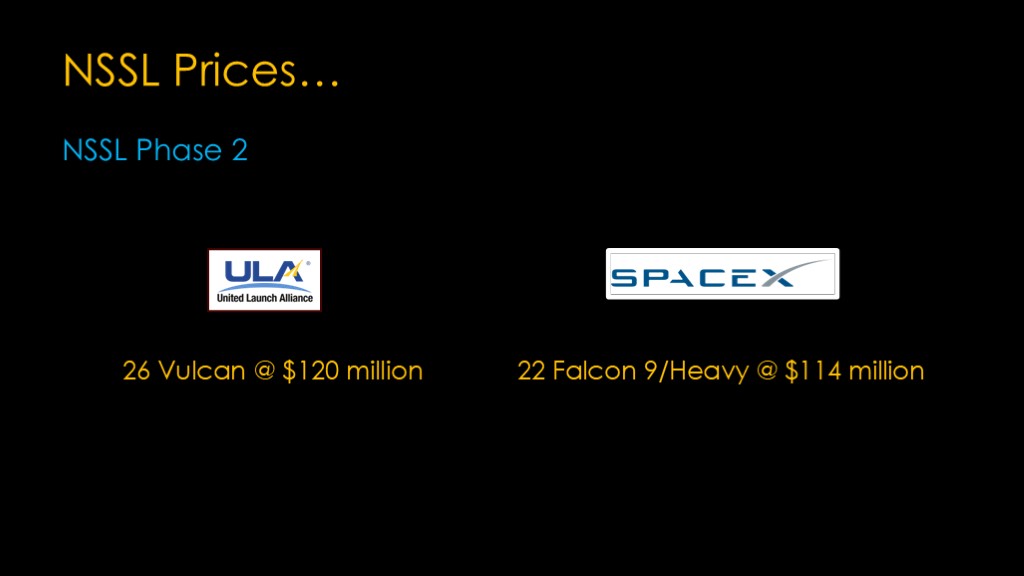
In Phase 2, ULA needs to compete with SpaceX. They will be flying 26 Vulcans at an average price of $120 million.
SpaceX will be flying 22 Falcon 9 or Falcon Heavy at an average price of $114 million.
The ULA price reduction is drastic - their average Vulcan price is cheaper than their cheapest Atlas V launch, which is a good indication that Vulcan is a *lot* cheaper than the previous options.
SpaceX no longer needs to be the cheapest out there and their previous prices were leaving a lot of money on the table, so they have raised their prices considerably to capture that revenue.
This is what we would expect with a duopoly - without any external competition, the cheaper provider will raise their prices.
Vulcan and Falcon are about the same price, but only in this artificial market...
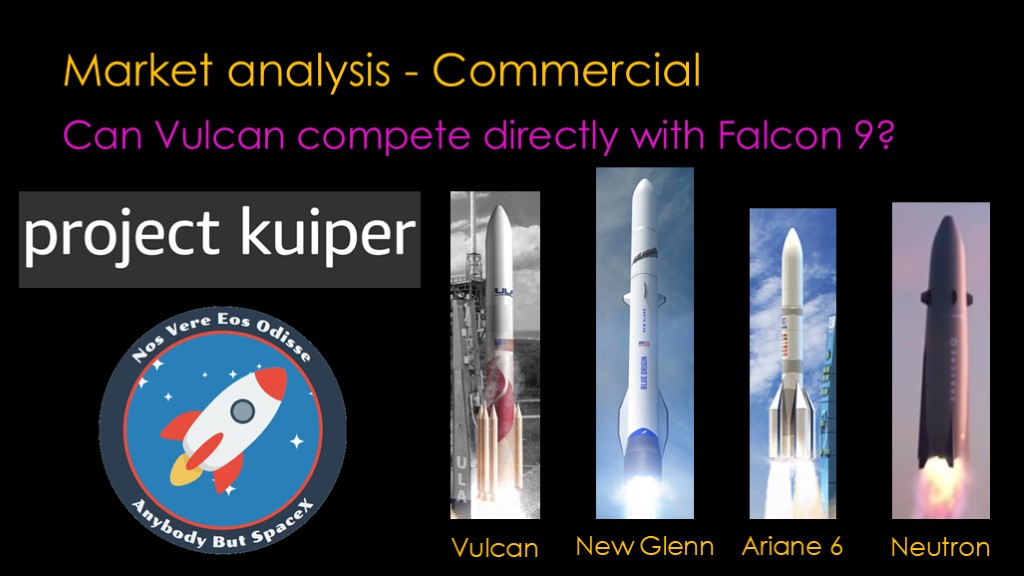
In the commercial market, things are different. Can Vulcan compete with Falcon here?
I'm skeptical. Falcon 9 is a cash cow right now and I think that SpaceX is reaping solid profits on every commercial flight that they launch. Falcon 9 is regularly reused and SMART reuse for Vulcan is at least a few years away.
There is, however, a market segment that could be quite lucrative for ULA, and that's the "anybody but SpaceX" market segment, which currently means Amazon's project Kuiper constellation.
Amazon has announced launch contracts for Vulcan, New Glenn, and Ariane 6. I also expect that Neutron will be in the mix.
Of those, I expect that New Glenn and Ariane 6 will have issues getting to a high flight rate and that leaves Neutron as the only competitor for Vulcan. I expect Vulcan to do well in this segment.
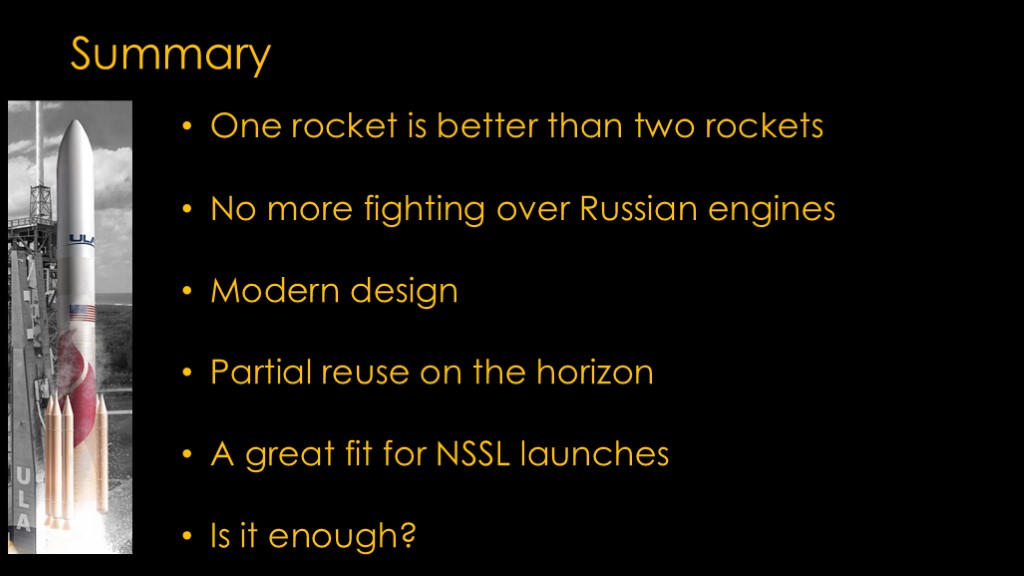
Vulcan is an important new launcher for ULA.
It fixes their problem of having two rockets, they don't have to fight over Russian engines, and the modern design of Vulcan makes everything easier.
They have a partial reuse approach on the horizon - it's not as good as what SpaceX has in Falcon 9 but its likely the best they can do.
It's a great fit for NSSL launches, and that is the most lucrative market for ULA, so that had to hit that well, and they have.
The open question is whether it's enough. Many people question whether they should have aimed for a design more like Falcon 9 or even a fully reusable design like Starship, but it looks like Vulcan will fly very soon and most of the other new rockets have at least a couple of years before they launch.
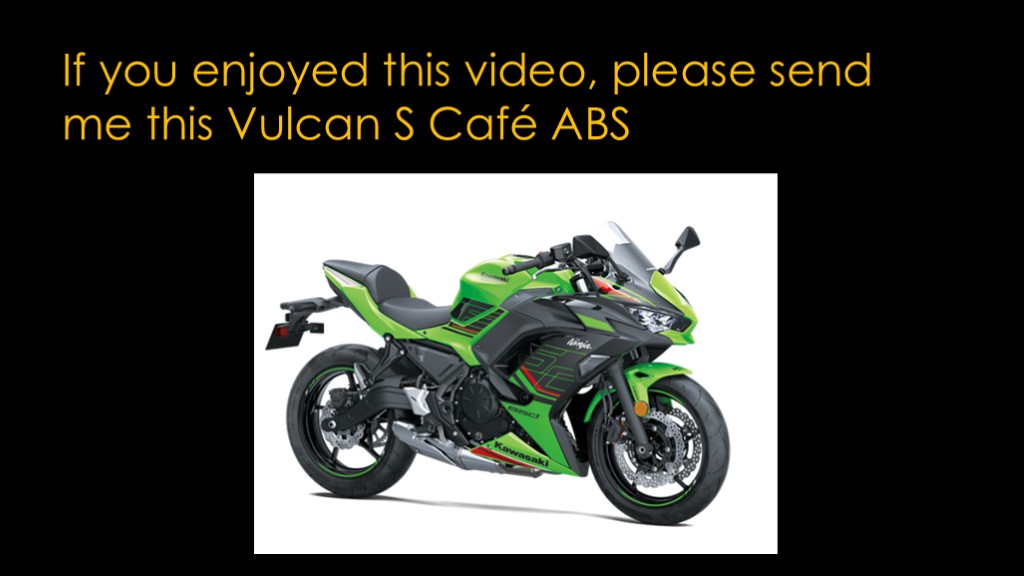
If you enjoyed this video, please send me this Vulcan S Café ABS.
Though to be honest, I'd prefer this one instead...